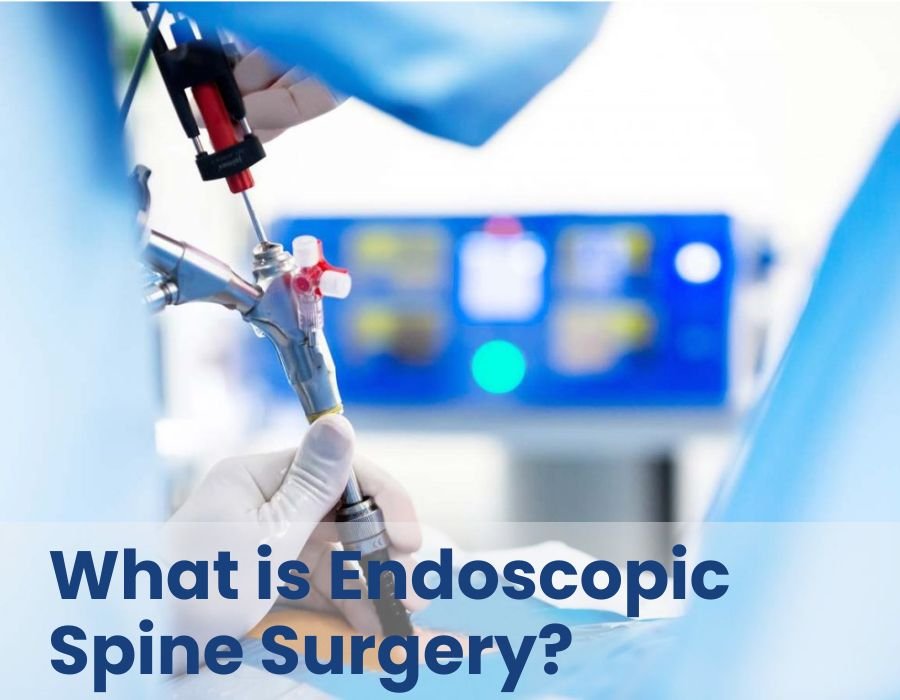Endoscopic spine surgery is a minimally invasive procedure that is revolutionizing spinal interventions. It utilizes a small camera (endoscope) to visualize and treat spine conditions through tiny incisions, reducing trauma and enhancing precision.
Benefits of Endoscopic Spine Surgery
There are many benefits of endoscopic spine surgery for patients. These include,
- Minimally Invasive Approach: Endoscopic spine surgery involves smaller incisions, reducing trauma to surrounding tissues. This minimally invasive approach leads to less pain, minimal scarring, and faster recovery compared to traditional open surgery.
- Precise Visualization: The endoscope provides high-definition, magnified images of the spine’s interior. This exceptional visualization allows surgeons to precisely navigate and address specific issues, enhancing the accuracy of the procedure.
- Reduced Blood Loss: Due to the targeted nature of endoscopic spine surgery and the minimized tissue disruption, there is a notable reduction in blood loss during the procedure. This contributes to a lower risk of complications and a smoother recovery process.
- Quicker Recovery Time: Patients undergoing endoscopic spine surgery often experience a shorter recovery period compared to traditional open surgery. The reduced postoperative pain and minimized tissue damage enable a faster return to daily activities and an improved overall quality of life.
- Decreased Postoperative Pain: The minimally invasive nature of endoscopic spine surgery translates to less postoperative pain for patients. Smaller incisions and reduced disruption of tissues contribute to a more comfortable recovery, often requiring less pain medication.
- Improved Cosmetic Outcome: The small incisions used in endoscopic spine surgery result in better cosmetic outcomes. Patients appreciate the reduced scarring and improved aesthetic appearance compared to the more extensive scars associated with traditional open procedures.
How Does Endoscopic Surgery Work?
- Introduction of the Endoscope: The process begins with a small incision or natural body opening, depending on the type of procedure. The endoscope is then inserted through this entry point.
- Visualization: The endoscope is equipped with a light source and a high-resolution camera at its tip. As it advances through the body, it provides real-time images of the internal structures. These images are typically displayed on a monitor, allowing the surgeon to visualize the area of interest.
- Inflation of the Surgical Site: In some cases, the surgical area needs to be inflated with a harmless gas (such as carbon dioxide) to create more space for the surgeon to work. This inflation helps to separate organs and tissues, providing a clearer view and more room for the necessary procedures.
- Use of Surgical Instruments: Alongside the endoscope, the surgeon inserts specialized surgical instruments through additional small incisions or ports. These instruments are manipulated to perform the necessary surgical tasks, such as cutting, suturing, or removing tissue.
- Precise Movements: The surgeon guides the instruments with precision based on the visual feedback from the endoscope. The movements are often more delicate and controlled compared to traditional open surgery.
- Real-time Monitoring: Throughout the procedure, the surgeon continuously monitors the progress on the video screen. Adjustments can be made as needed, ensuring accurate and safe completion of the surgery.
- Less Invasive Approach: One of the key advantages of endoscopic surgery is that it is less invasive than traditional open surgery. This typically results in smaller incisions, reduced trauma to surrounding tissues, less pain for the patient, and a quicker recovery time.
- Closure of Incisions: After completing the procedure, any small incisions are closed with stitches or surgical tape. In some cases, no external sutures are needed, as the incisions are very small.
How long does it take to recover from endoscopic spine surgery?
Patients often experience a faster recovery with endoscopic surgery compared to traditional surgery. The smaller incisions contribute to reduced pain, scarring, and a shorter hospital stay.
Endoscopic surgery is commonly used for various procedures, including gallbladder removal, appendectomy, joint surgery, gastrointestinal procedures, and more. It continues to evolve with advancements in technology, providing both patients and surgeons with improved outcomes and recovery experiences.
Who is a Candidate for Endoscopic Spine Surgery?
Ideal candidates include those with specific spine conditions amenable to minimally invasive treatment. Conditions like herniated discs, spinal stenosis, or facet joint arthritis may qualify. A thorough evaluation by a spine specialist determines candidacy for endoscopic surgery.
In conclusion, Dr. Shrikant Dalal emphasizes the transformative potential of endoscopic spine surgery. Endoscopic spine surgery emerges as a transformative solution for spinal issues, offering a spectrum of benefits. Prospective candidates should consult with a qualified spine surgeon for personalized assessments and to explore the potential advantages of this advanced surgical approach. Optimize your spine health journey with the precision and efficiency of endoscopic spine surgery.


